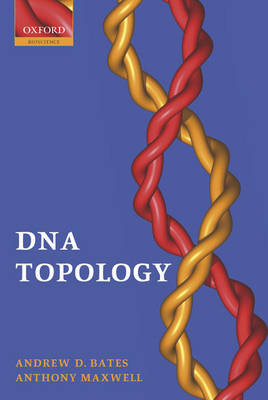
DNA Topology
Seiten
2005
Oxford University Press (Verlag)
978-0-19-856709-7 (ISBN)
Oxford University Press (Verlag)
978-0-19-856709-7 (ISBN)
- Titel ist leider vergriffen;
keine Neuauflage - Artikel merken
Providing a basic account of DNA structure, this book covers DNA supercoiling, the definitions and physical meanings of linking number, twist, and writhe, and the free energy associated with supercoiling. It then considers the rather more complex description of DNA lying on a curved surface and its application to the nucleosome.
DNA as the genetic material is a topic of intense interest in the 21st century, with the genomes of many organisms having been sequenced. The double helix structure discovered by Watson and Crick 50 years ago is now very familiar and its importance for DNA function is widely appreciated. However, it has become clear that there are many deviations from this basic structure that have important biological consequences. Prominent among these are the 'topological'
configurations: supercoiling, knotting, and catenation (linking). Unfortunately, a full understanding of these features of DNA structure requires the grasp of concepts that can prove difficult for both students and more advanced researchers. This book aims to explain these ideas simply, but rigorously,
to allow a wider appreciation of DNA topology.
DNA Topology starts with a basic account of DNA structure before going on to cover DNA supercoiling, the definitions and physical meanings of linking number, twist, and writhe, and the free energy associated with supercoiling. It then considers the rather more complex description of DNA lying on a curved surface and its application to the nucleosome, followed by the phenomena of DNA knotting and catenation. The final chapters deal with the topoisomerases, the enzymes that control DNA
topology, and, most importantly, with the biological significance of the topological aspects of DNA structure. Although some of these concepts are quite complex, they are presented in an accessible way, drawing on interesting and relevant examples.
DNA as the genetic material is a topic of intense interest in the 21st century, with the genomes of many organisms having been sequenced. The double helix structure discovered by Watson and Crick 50 years ago is now very familiar and its importance for DNA function is widely appreciated. However, it has become clear that there are many deviations from this basic structure that have important biological consequences. Prominent among these are the 'topological'
configurations: supercoiling, knotting, and catenation (linking). Unfortunately, a full understanding of these features of DNA structure requires the grasp of concepts that can prove difficult for both students and more advanced researchers. This book aims to explain these ideas simply, but rigorously,
to allow a wider appreciation of DNA topology.
DNA Topology starts with a basic account of DNA structure before going on to cover DNA supercoiling, the definitions and physical meanings of linking number, twist, and writhe, and the free energy associated with supercoiling. It then considers the rather more complex description of DNA lying on a curved surface and its application to the nucleosome, followed by the phenomena of DNA knotting and catenation. The final chapters deal with the topoisomerases, the enzymes that control DNA
topology, and, most importantly, with the biological significance of the topological aspects of DNA structure. Although some of these concepts are quite complex, they are presented in an accessible way, drawing on interesting and relevant examples.
Dr Andy Bates is at the School of Biological Sciences at the University of Liverpool, UK. Professor Tony Maxwell is Head of the Department of Biological Chemistry at the John Innes Centre, Norwich, UK.
1. DNA structure ; 2. DNA supercoiling ; 3. DNA on surfaces ; 4. Knots and catenanes ; 5. DNA topoisomerases ; 6. Biological consequences of DNA topology
| Erscheint lt. Verlag | 10.2.2005 |
|---|---|
| Zusatzinfo | numerous line drawings and halftones |
| Verlagsort | Oxford |
| Sprache | englisch |
| Maße | 162 x 242 mm |
| Gewicht | 479 g |
| Themenwelt | Informatik ► Weitere Themen ► Bioinformatik |
| Naturwissenschaften ► Biologie ► Biochemie | |
| Naturwissenschaften ► Biologie ► Genetik / Molekularbiologie | |
| ISBN-10 | 0-19-856709-X / 019856709X |
| ISBN-13 | 978-0-19-856709-7 / 9780198567097 |
| Zustand | Neuware |
| Haben Sie eine Frage zum Produkt? |
Mehr entdecken
aus dem Bereich
aus dem Bereich
Buch | Softcover (2021)
Springer Spektrum (Verlag)
CHF 69,95
Grundlagen, Algorithmen, Anwendungen
Buch | Hardcover (2022)
Wiley-VCH (Verlag)
CHF 109,95


